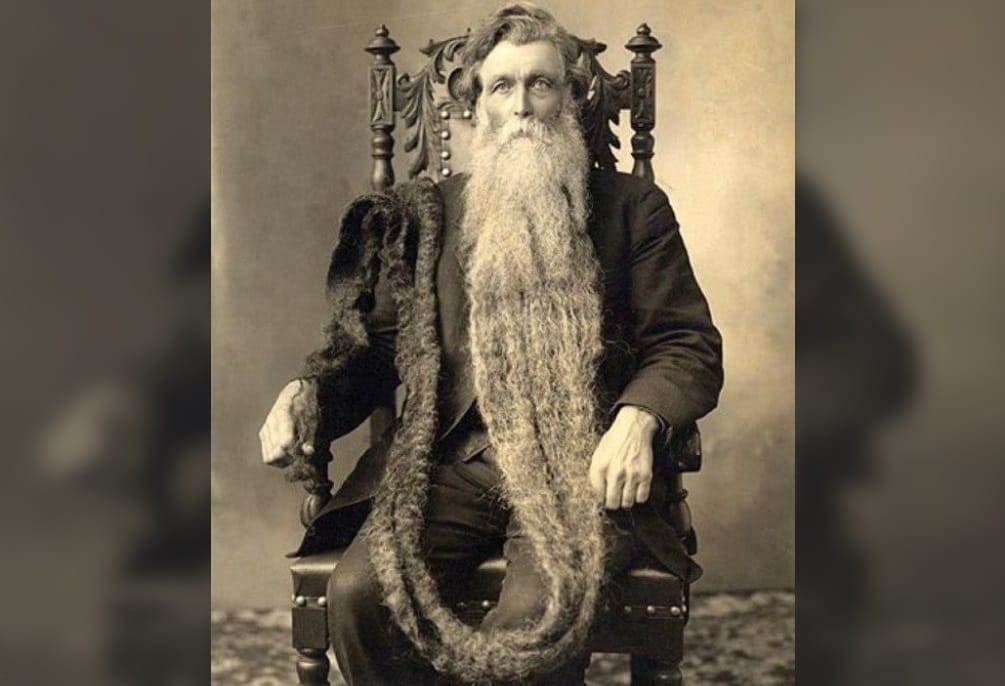According to numerous posts on social networks, this photo shows a man who died in the 19th century under very unusual circumstances: he allegedly broke his neck due to stepping on his own beard. We have verified the accuracy of this story.
The viral photo shows a man with a giant beard sitting on a chair. The authors of the publications, in addition to the cause of death of this man, also indicate that the photo was taken in 1867 in the USA. In RuNet, such messages were most widely distributed in “VKontakte", where similar posts in historical public pages sometimes received several hundreds, and sometimes thousand likes (examples here, here, here, here, here And here). IN Twitter “Historical Photos” account with over 500,000 subscribers since 2014 published eight identical tweets about an unusual accident. Such posts also receive tens of thousands of views on Telegram (examples here, here, here, here And here).
In addition, sometimes another version of a viral photo is found on the Internet - in it a man is represented as Odin, the supreme god in German-Scandinavian mythology, with his characteristic attributes: an eye patch and two ravens sitting behind him.
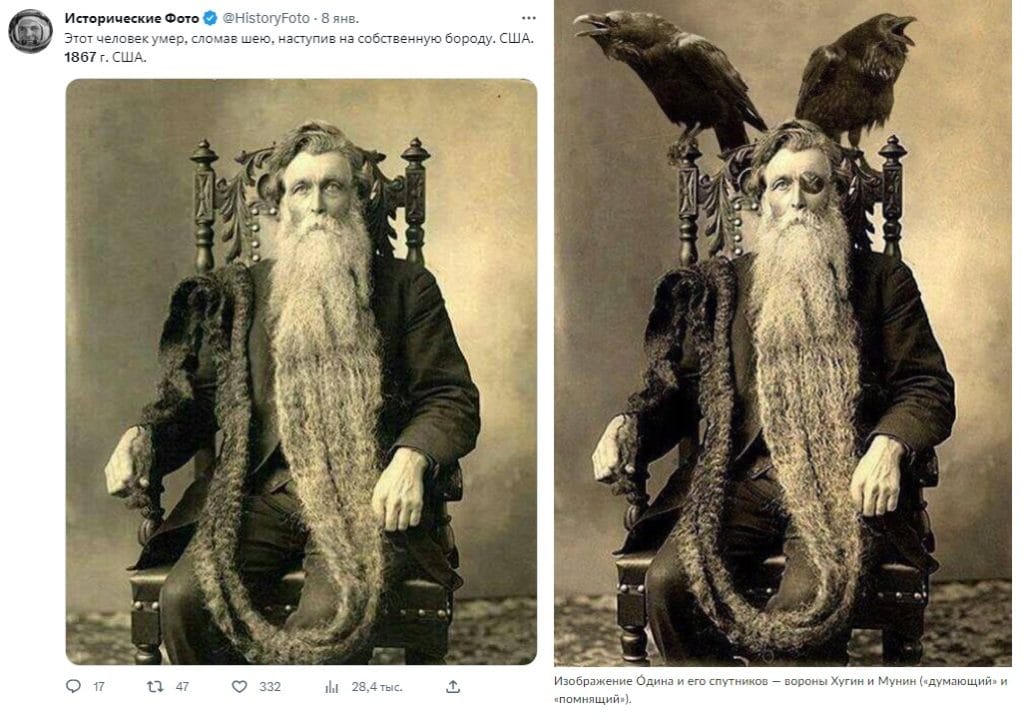
To begin with, we did the reverse search from the picture and found it original photograph on the website of the British photo agency Alamy, and its original stored in the North Dakota State University Library. As expected, the eye patch and birds are missing from the original. The name is also indicated in the photo database the person imprinted is Hans Langseth. There is about him article on Wikipedia, where the same viral photo is posted (according to to the majority sources, it shows a 66-year-old man). Langseth is a US resident of Norwegian descent who set a world record for beard length. This is an achievement confirms official website of the Guinness Book of Records:
The longest natural male beard in history belonged to Hans N. Langseth (was born in 1846 in Norway). Her length at the time of Langseth's burial in Kensett, Iowa in 1927 was 5.33 m (17 ft 6 in). In 1967 she was donated Smithsonian Institution (Washington, USA).
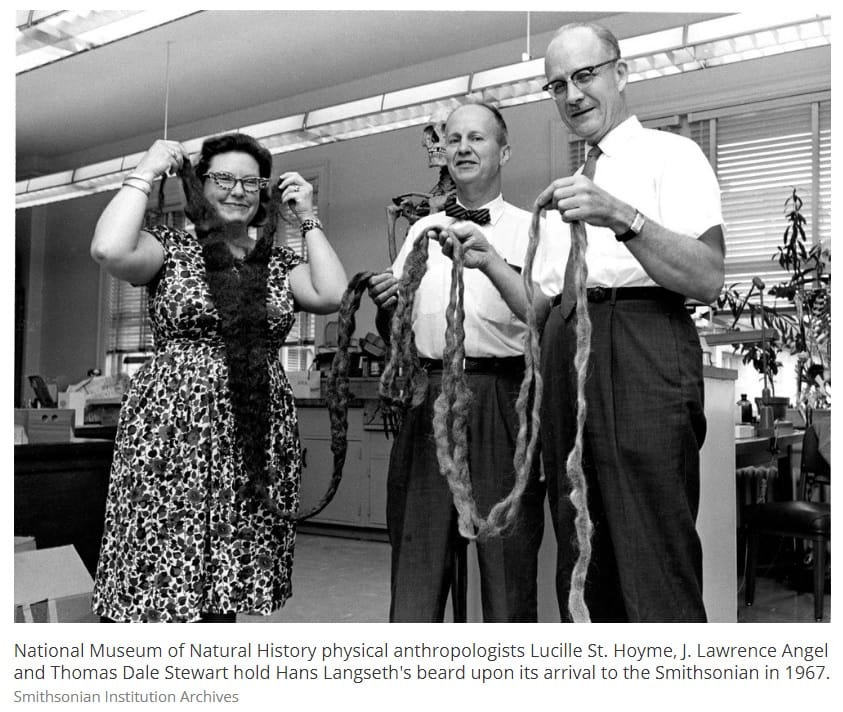
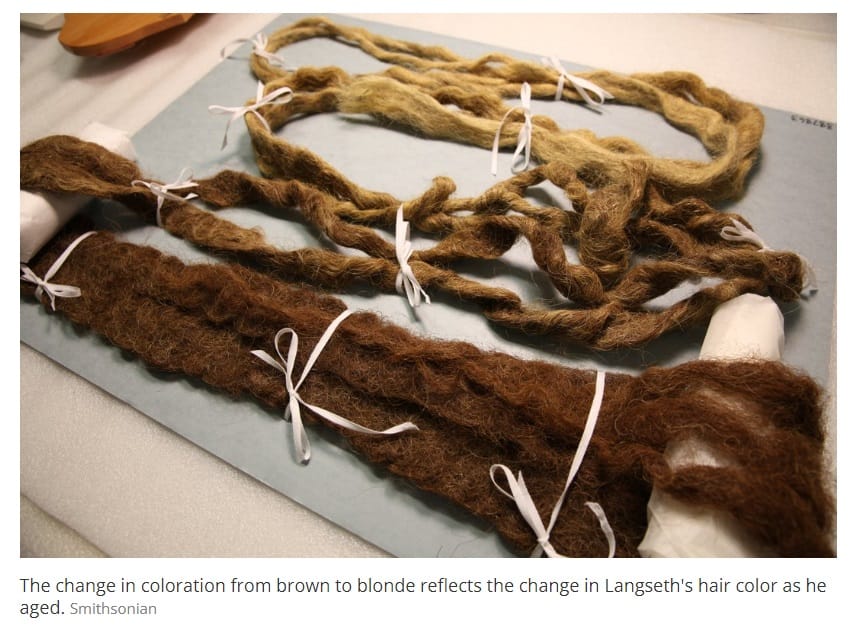
According to website Smithsonian Institution, Langseth began growing a beard at age 19 to compete in local beard-growing competitions and continued after they were completed. According to some publications, the viral photo was taken in 1867, but at that time Langseth was slightly over 20 years old and his beard could not reach the size that we see in the picture. According to website North Dakota State University Libraries, photo dates to the 1910s. If we assume that the man was actually photographed at the age of 66, then the picture was taken in 1912 or 1913.
Before his death, Langseth told the children about his last wish: the record holder wanted his beard to be cut off after the farewell ceremony and preserved for posterity. Langseth's son agreed, but before getting into the museum, the beard lay in a box in the attic for several decades. At the same time, how reported on a website dedicated to the record holder's life, the beard was about a foot (0.3 m) longer because it was not completely cut off.
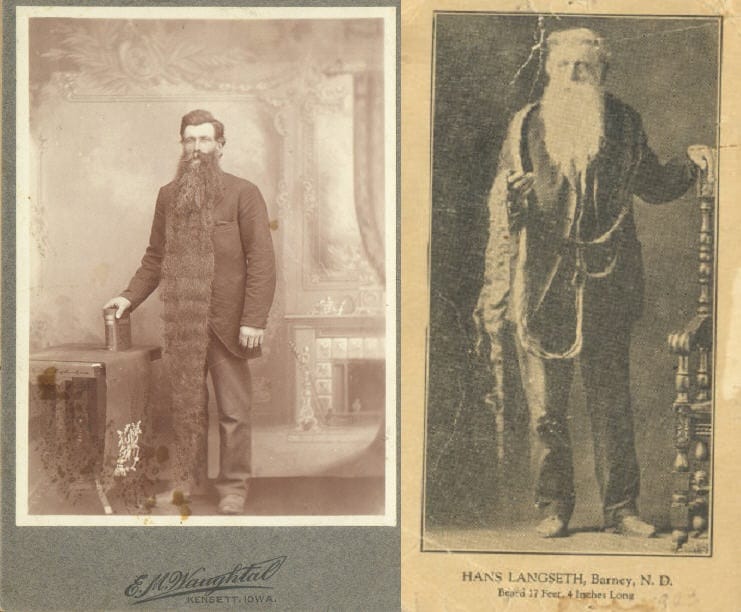
In November 1927, The Greene Recorder newspaper published Langseth's obituary. It was reported there that on November 10, at the age of 82, the man died in the house of his son. The cause of death was not given, so there was no mention of a broken neck.
However, the story of death due to a beard does not come out of nowhere.
In the 16th century, one of the leaders of the Austrian city of Braunau am Inn (the same one where several centuries later was born Adolf Hitler was Hans Steininger. Since photography had not yet been invented, we are left with only paintings, engravings and sculptures of this man, some of which were created centuries after his death. Yes, in the Louvre collection available his full-length portrait, and the description of the exhibit reads: “A councilor from Braunau named Hans Steininger wore a beard divided in two, reaching down to his heels; he died in 1567.” Northern wall of the parish church of Braunau, where Steininger is buried, decorated his sculptural portrait, also depicting a man with a long forked beard.
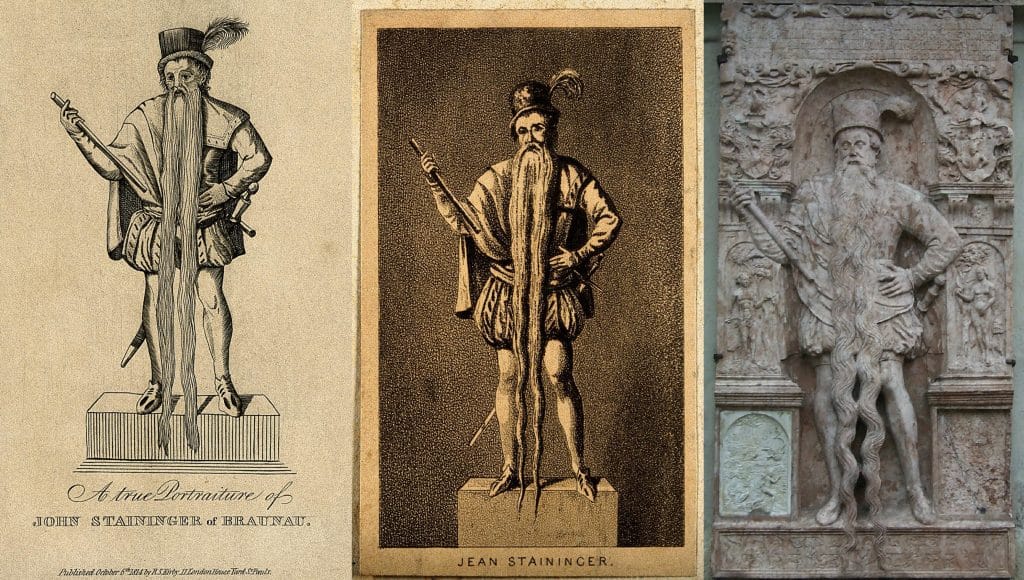
On different educational And entertaining resources writethat on September 28, 1567, a fire broke out in the city, causing panic. Steininger arrived on the scene, but in the confusion he forgot to roll up and remove his beard, then stepped on it and fell down the stairs, breaking his neck. Occurs and the version that he died in the fire. The 19th century Austrian travel writer Josef Kiselak also mentioned 1567 as the date of death, but the death of the bearded man told like this: “When he, wanting to show his devotion to the passing prince, quickened his usually measured step, he stepped on his beard and, having bruised something when falling, soon died from the consequences of the injury.” And the Austrian local historian and writer of the 19th century Benedikt Pillwein in his book told about several contradictions in Steininger's biography. For example, according to legend, King Rudolf II was so impressed by his beard that he invited Steininger to Prague for a royal celebration. However, according to words Pillwein, this is not true, since Rudolf II rules from the mid-1570s, and the bearded man died on September 28, 1570, as the tombstone says. There is an engraving on the website of the Austrian National Library (you can take a closer look here), where the same date is indicated. At the same time, Pillwein gave two different descriptions of how Steininger died. According to the first, he was working with documents in the town hall when a horseman rushed through the city and announced the death of the king, causing Steininger to suddenly jump up, step on his beard and break his neck. But Pillwein calls the fire version more probable: Steininger wanted to save himself, so he was in a hurry and stepped on his beard, as a result of which he fell down the stairs, breaking his neck.
And although several centuries later the exact details of Steininger's death remain a mystery, his beard stored in local history museum city of Braunau am Inn.
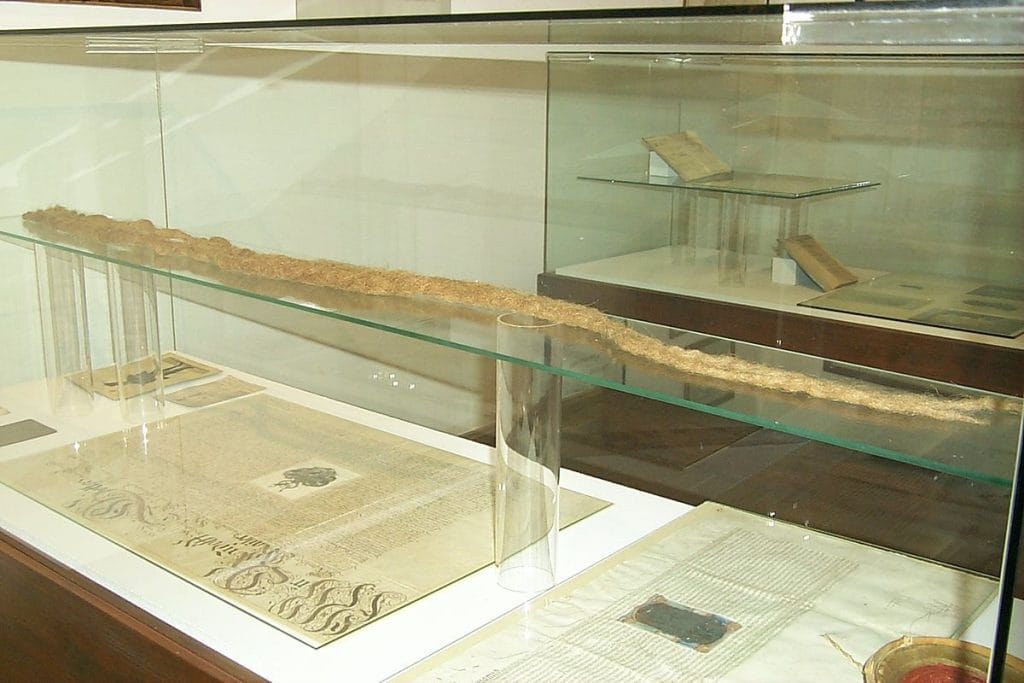
So the man in the viral photo did not die as a result of a broken neck after stepping on his beard. The authors of such publications are probably mixed up the real documented history of the Norwegian-American Hans Langseth, who died in the 20th century, and conflicting versions of the biography of the Austrian Hans Steininger, who lived in the 16th century.
Cover photo: Institute for Regional Studies, N.D.S.U., Fargo (Folio 13.1) / Jorgenson, Nils C.
Mostly not true
- Is it true that the modern image of Santa Claus was created by Coca-Cola advertisers?
- Is it true that hair and nails continue to grow after death?
- Is the photo of Vladimir Mayakovsky and Frida Kahlo together true?
- Is it true that a couple from Mexico set a world record for the fastest intercourse?
If you find a spelling or grammatical error, please let us know by highlighting the error text and clicking Ctrl+Enter.


